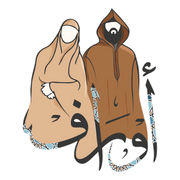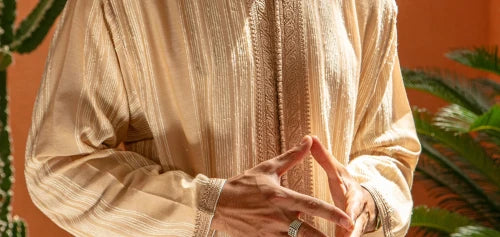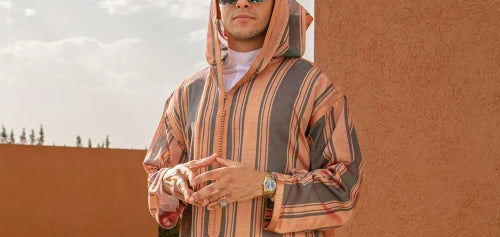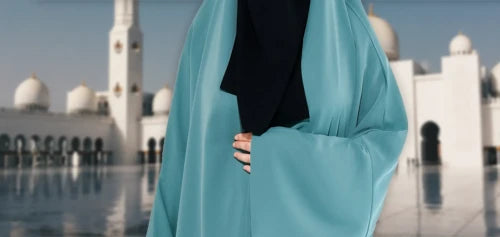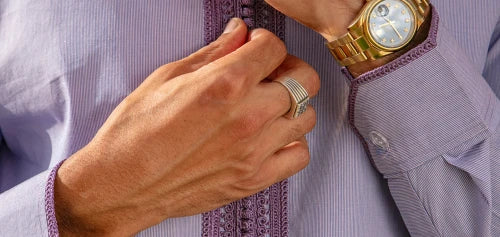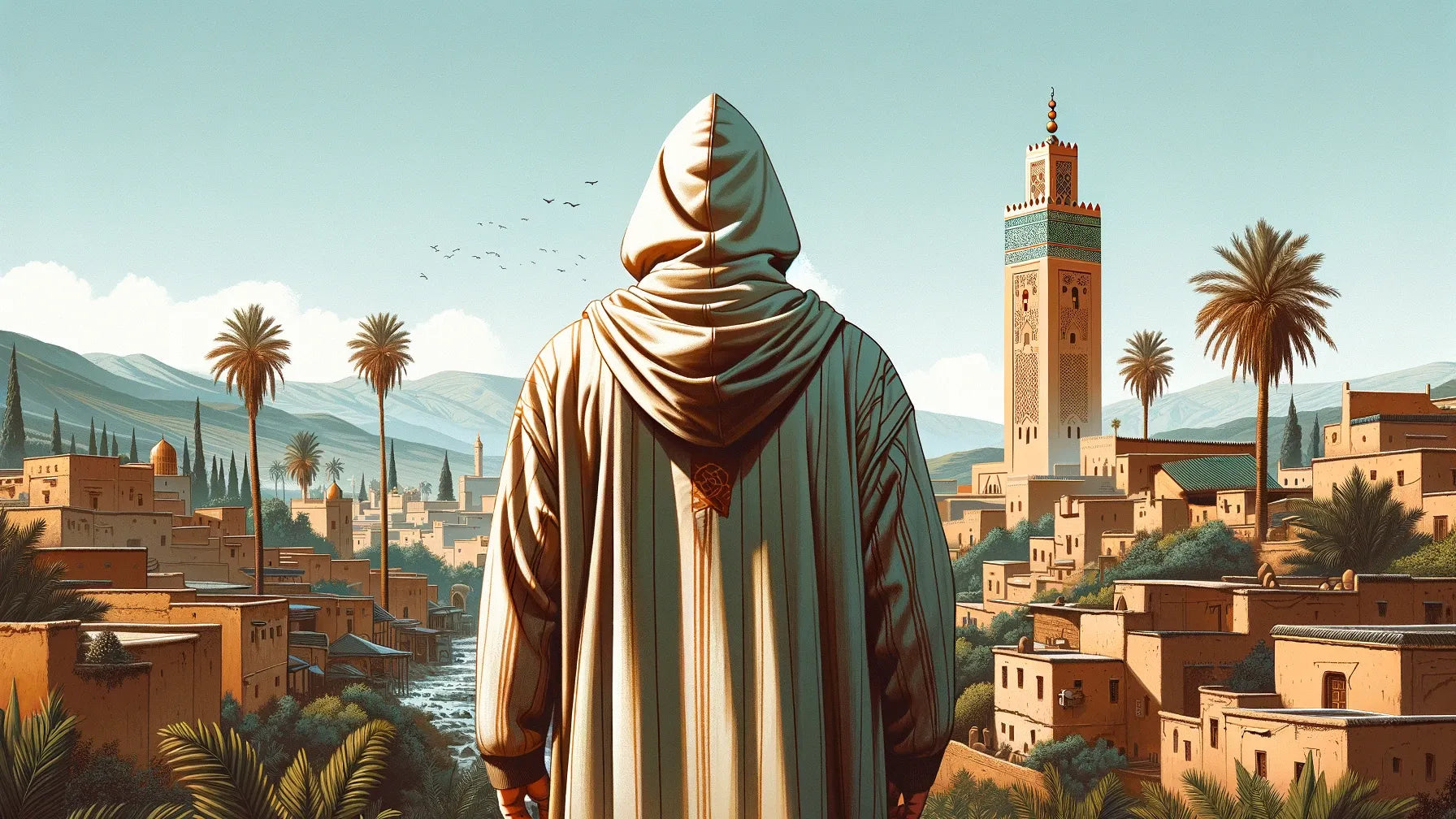The Djellaba, a traditional Moroccan garment known for its elegance and comfort, has transcended borders through the digital age, becoming a sought-after piece in online fashion markets. Its distinctive long sleeves, loose fit, and hood not only cater to functional needs but also embody a rich cultural heritage.
As e-commerce platforms burgeon, Djellaba's presence online offers a gateway for global enthusiasts to explore and embrace this traditional attire. However, the digital landscape presents challenges, particularly in ensuring the authenticity and quality of these garments. The ease of online shopping comes with the task of determining the genuine from the imitation, making the knowledge of material quality and authentic designs more crucial than ever for potential buyers.
In this article we aim to guide enthusiasts in navigating the online Djellaba market, ensuring they acquire pieces that represent the original attire's craftsmanship and tradition.
Importance of Quality Material
When it comes to selecting a Djellaba online, understanding the quality of materials used is paramount. Traditionally, Djellabas are crafted from wool, cotton, or synthetic fibers, each offering different benefits. Woolen Djellabas are ideal for cooler climates, providing warmth and comfort, while cotton ones offer breathability and softness, perfect for warmer weather. Synthetic fibers, though less traditional, offer durability and ease of care, making them a practical choice for daily wear.
The texture, weight, and weave of the fabric also play a crucial role in determining the garment's quality. A high-quality Djellaba will have a consistent texture, a comfortable weight that drapes elegantly, and a tight weave that ensures longevity. When shopping online, closely examine the product images and descriptions for clues about the fabric's quality. Look for mentions of "handwoven" or "handcrafted" as indicators of traditional craftsmanship and authenticity.
Beyond the material, the design and detailing of a Djellaba speak volumes about its authenticity. Traditional designs often feature intricate patterns, embroidery, or specific cuts that are unique to the region of origin. Authentic Djellabas may include detailed descriptions of the embroidery work, the history of the design, or the artisanal techniques used. Pay attention to these details when browsing online to ensure you're getting a piece that truly represents the artistry behind the garment.
For those seeking to own a piece of this rich cultural heritage, it's crucial to be vigilant about the quality and authenticity of Djellabas available online. Engage with sellers who provide detailed information about the materials, craftsmanship, and origin of their garments. Don't hesitate to ask for additional photos or information if you're unsure about a product's authenticity.
Identifying Authentic Designs
For a detailed exploration of the materials and authentic designs in Djellabas, one must appreciate the craftsmanship that goes into these traditional garments. The fabric choice plays a crucial role in the garment's functionality and aesthetic. Cotton, known for its breathability and softness, is ideal for warmer climates, offering comfort and ease. Wool, on the other hand, is prized for its warmth, making woolen Djellabas perfect for cooler temperatures. Silk Djellabas are less common but highly valued for their luxurious feel and elegant drape, often reserved for special occasions.
The quality of these materials directly impacts the longevity and appearance of the Djellaba. High-quality fabrics resist wear and maintain their color and texture over time, ensuring the garment remains a staple in one's wardrobe for years. This is particularly important in the context of online shopping, where tactile inspection isn't possible. Detailed product descriptions and high-resolution images become key in assessing the material quality.
Moving beyond the material, the authentic design of a Djellaba holds deep cultural significance. Traditional Moroccan Djellabas feature intricate embroidery, often handmade, that reflects the artistry and history of the region. These designs are not merely decorative but tell stories and signify the wearer's status and locality.
Authentic Djellabas might also include specific cuts and styles that have been passed down through generations, preserving the garment's cultural integrity.
Identifying these authentic designs when shopping online can be challenging but rewarding. Shoppers should look for signs of craftsmanship, such as the quality of embroidery, the symmetry of patterns, and the finish of the garment. Sellers who provide detailed backstory and craftsmanship information are often more reliable sources for authentic pieces. Additionally, customer reviews and seller ratings can offer insights into the authenticity and quality of the products.
Buying Tips for Online Shoppers
To successfully navigate the online market for Djellabas, it's essential to delve into product descriptions with a discerning eye. Sellers often list the materials used, providing insight into the garment's quality and suitability for your needs. High-resolution images are invaluable, offering a closer look at the fabric's weave, the intricacy of any embroidery, and the overall craftsmanship.
The reliability of the seller is paramount. Investigate their online presence, looking for a history of positive interactions and satisfied customers. A reputable seller will often have detailed information about their sourcing and production processes, highlighting their commitment to quality and authenticity.
Payment security cannot be overstressed. Opt for secure, well-known payment platforms and be wary of sellers who insist on less secure methods. A clear, fair return policy is equally important, offering a safety net should the garment not meet your expectations.
By approaching online shopping with these considerations in mind, you're more likely to find a Djellaba that honors the rich heritage of this traditional garment while ensuring a satisfactory and secure purchasing experience.
Conclusion
In the journey to acquiring a Djellaba online, the blend of cultural appreciation and informed shopping practices is paramount. Understanding the significance of materials and the authenticity of designs enriches the buying experience, ensuring the garment you choose resonates with the rich tapestry of its heritage. Armed with knowledge on evaluating quality and authenticity and navigating the online marketplace wisely, you're well-equipped to select a Djellaba that's not just a piece of clothing but a narrative of tradition and craftsmanship.
This careful approach not only honors the cultural significance of the Djellaba but also ensures that the piece you integrate into your wardrobe is of a quality that lasts, embodying the beauty and resilience of traditional craftsmanship in the modern world.
At Awraaf Clothing, we take pride in offering a gateway to the rich tapestry of Moroccan heritage through our meticulously curated Djellaba collection. Our journey is not just about selling attire; it's about fostering a connection between the age-old traditions of Morocco and the contemporary fashion enthusiast. We invite you to explore our collection, where each piece is a narrative of craftsmanship and authenticity, designed to bridge worlds and celebrate a legacy that transcends time. Visit our online shop and become a part of this cultural odyssey.
